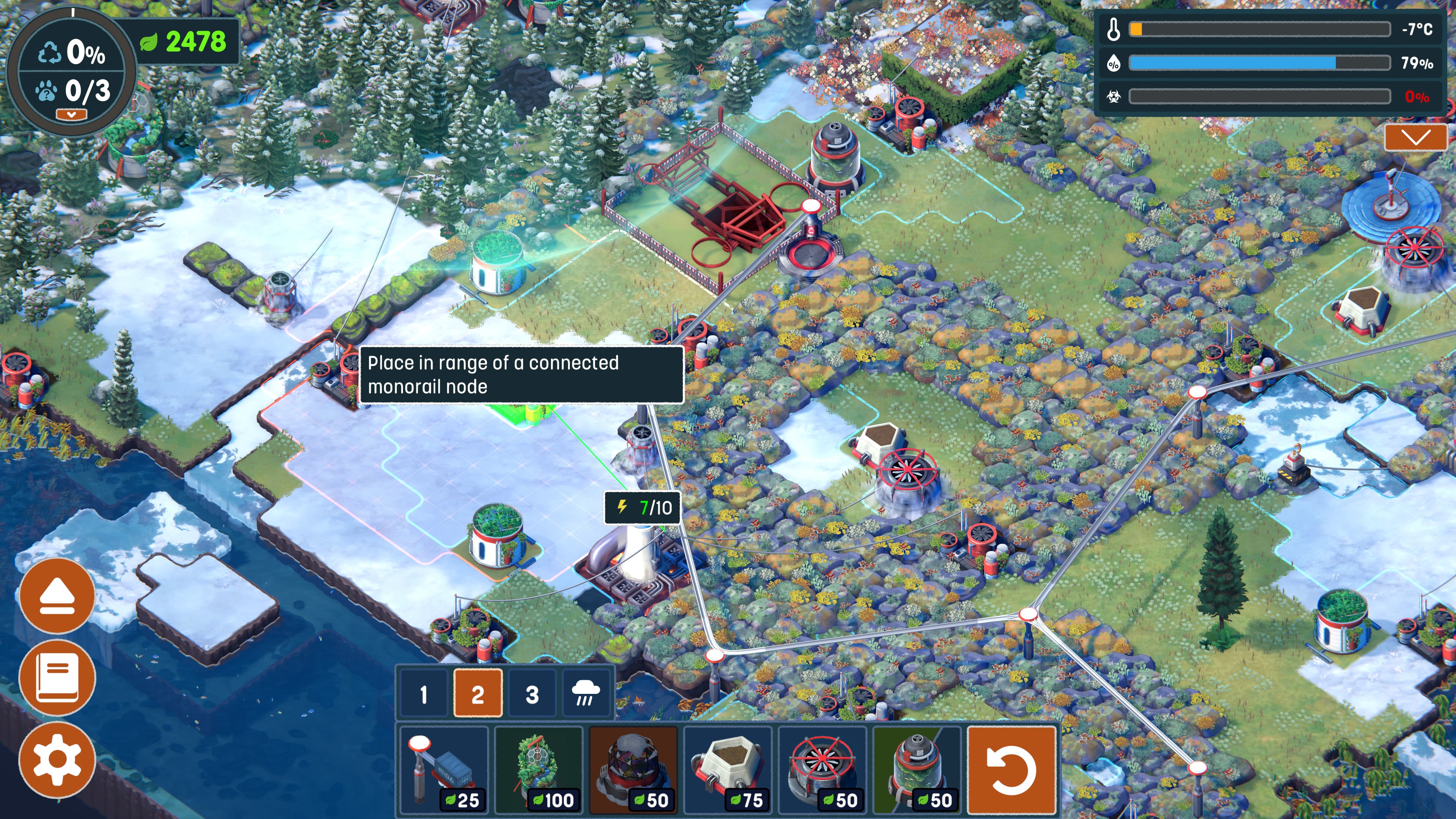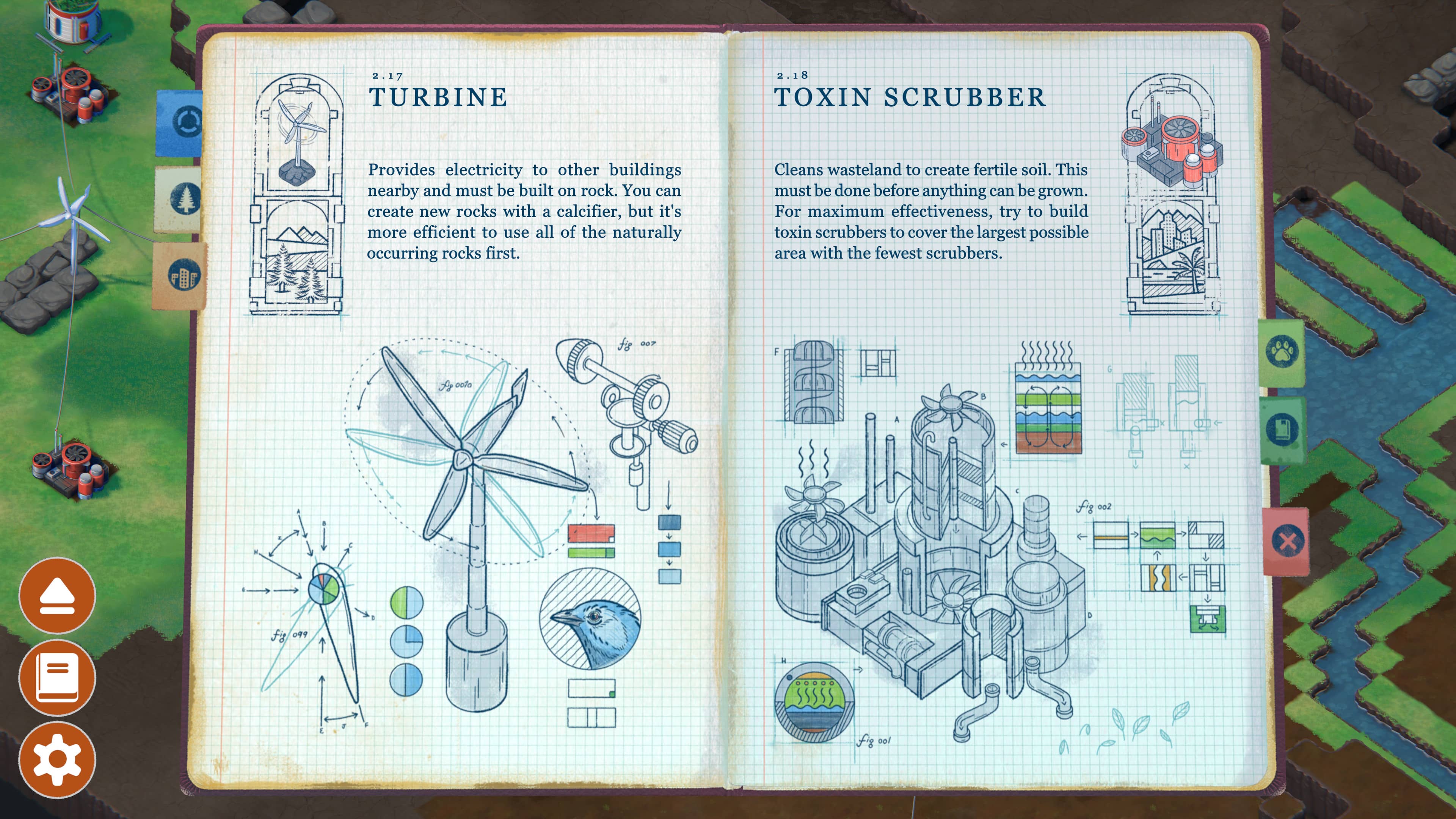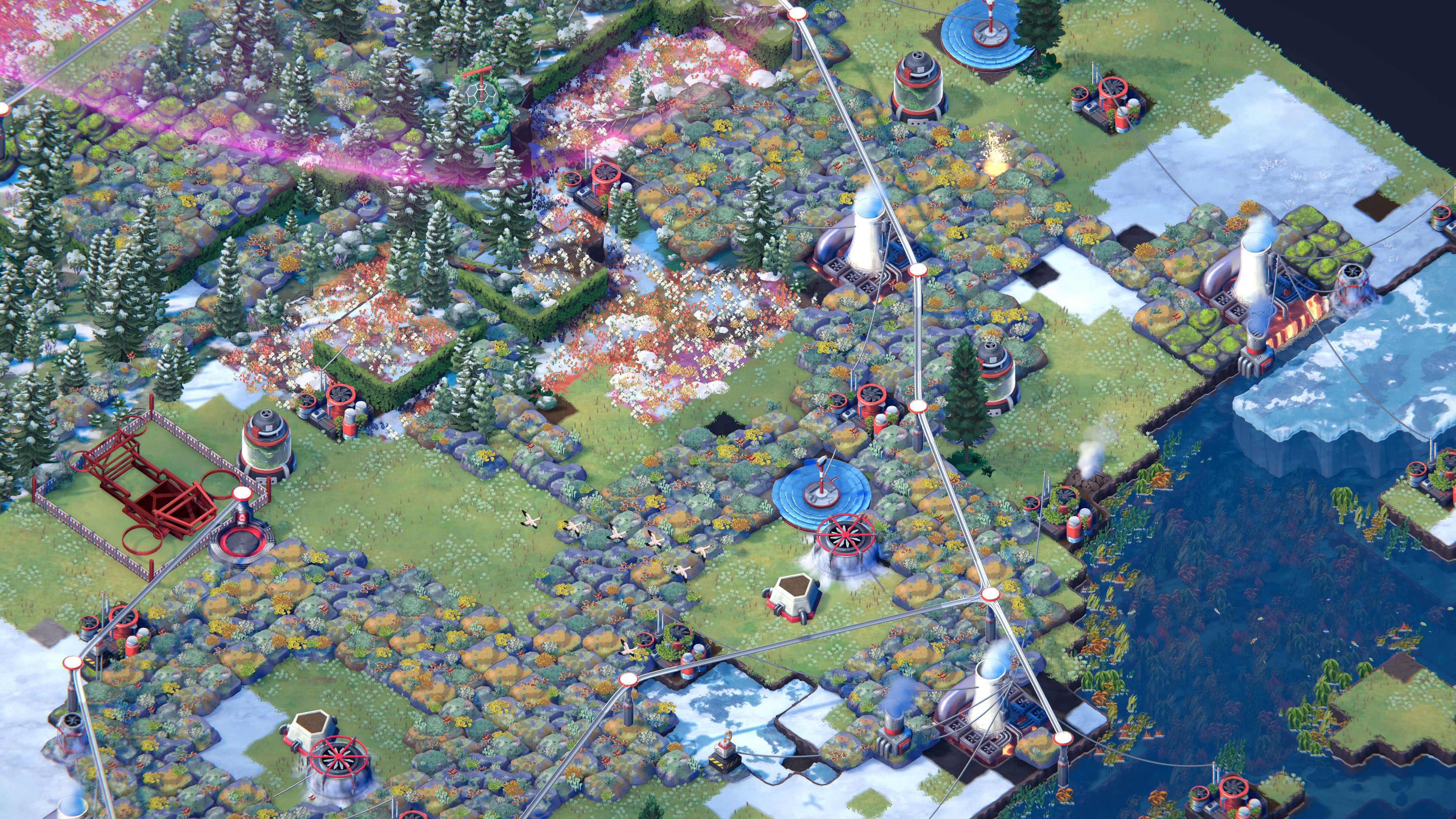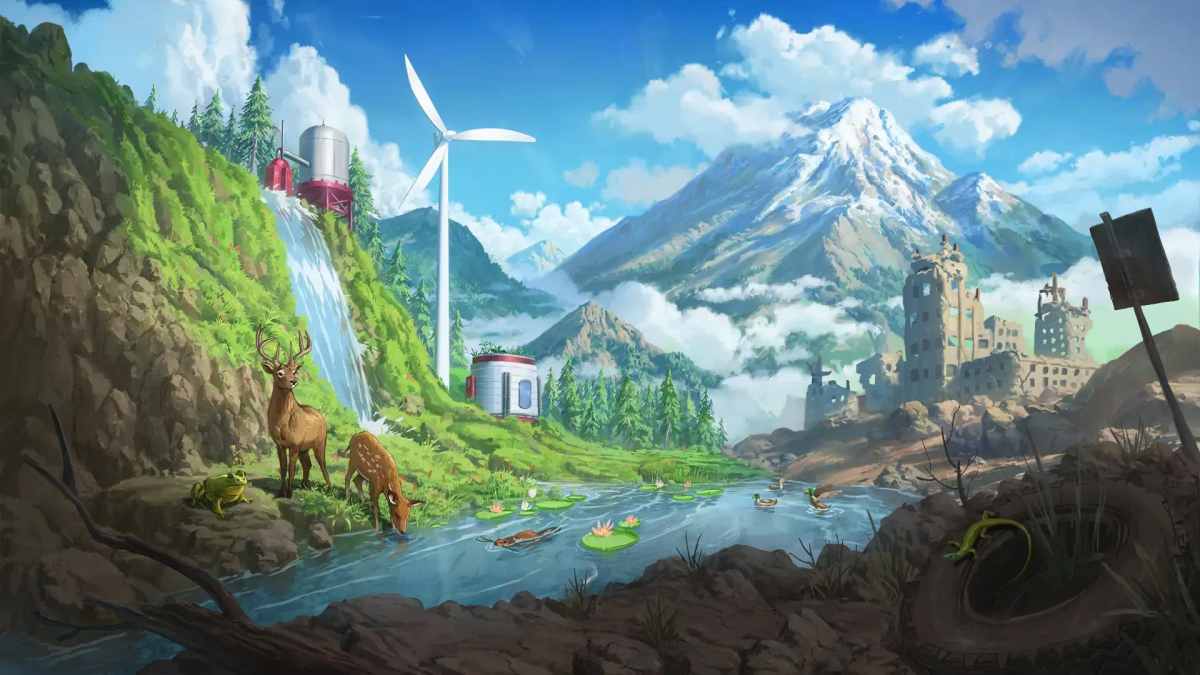The idea of tearing down structures in a city builder generally evokes memories of unleashing a torrent of natural disasters upon a pixellated world in Sim City, usually for my own entertainment and certainly not for the benefit of the in-game world. In Terra Nil, however, undoing everything you’ve built is in fact the goal; cleanse each barren wasteland, reintroduce flora and fauna, before dismantling all that is man-made and leaving without a trace.
This concept of undoing all of the harm done by (what we can only assume) humans and then leaving nature to take its course and thrive is at the very core of Terra Nil, the ‘reverse city builder’ by Cape Town-based developer Free Lives.
It seems reductive to solely label this game as a ‘cozy’ game, but whether cozy games can have a serious message and still be considered ‘cozy’ is a whole other discussion. Terra Nil certainly presents you with a message, clear as day: We are the problem, but we could also be the solution (and depending on how you read it, our absence from nature is perhaps part of that solution).
With each desolate region you venture to, your task is to begin the process of cleansing an environment not conducive to life through building structures such as wind turbines for power, toxin scrubbers to return the soil and water to its natural state, and irrigators to provide moisture and greenery. Once you’ve brought enough life back to the region, it’s time to consider biodiversity and turn the plain greenery into lush forests, mangroves, and coral reefs, before then re-establishing animal populations. Once that’s complete, you recycle your buildings before admiring your handiwork, and then leave the land better than you found it.
Read: Reconnect with the planet: Miska and environmental activism in games
While very much like a city builder in its mechanics and structure, there are also aspects of puzzle games in the Terra Nil building process – use your finite resources to rewild as much of the land as you can through strategic placement with minimal overlaps, also taking into account power and placement requirements for each individual building.
In order to earn more resources, you need to build with purpose. Gains only come from positive impacts on the region, so rushed building with minimal effect will soon leave you in a tight spot. Spend too many resources with minimal returns and you’ll need to (depending on your difficulty leve) either start over or take a few steps back to figuratively and literally get back into the green.

While Terra Nil is relatively simple in the opening moments, progressing further introduces more mechanics and buildings, slowly growing more complex without becoming too overwhelming. With procedurally generated maps, replaying the same region is a slightly different experience every time. While this does keep things fresh, it does pose some difficulty when getting into the later stages of each region when rediscovering fauna that often has very specific needs, such as two different biomes within a small distance of each other, or prey species within the same block.
Read: Terra Nil devs announce conservation charity donation
As with real-life nature, the fragile balancing act of the Terra Nil world can be difficult too. Cloud seeders can increase humidity, which can in turn help the region begin to rain, or see salmon return to rivers, but some requirements directly contrast one another, leading you to make a choice on what will have the most positive impact in the world around you. The game is rarely in your face, in terms of both design and message, but sometimes I found myself wishing it did just a little more, just for those moments when I was unsure of the next best steps.

When you finally manage to restore diverse biomes, animal populations, and detoxify the world, you need to leave, but not without recycling everything artificial you’ve built so far first. If you haven’t been purposeful in your building placement, this presents its own set of challenges. If your buildings are deep in a verdant forest, for example, expect to have to undergo more construction to create tracks or rivers so you can completely rid the region of the evidence you were ever there.
There’s no competitive element to Terra Nil, nor an urge to build bigger, better, or taller like you might see in other city builders, but with the ability to appreciate the world before fully leaving at the end of each level, you don’t need big rewards or leaderboards. The game asks you to sit back and dwell in the atmospheric beauty of the land you’ve revivified, taking in the sounds of nature reclaiming what it was once more, paired with the contemplative soundtrack by French composer Meydän. You can stay a while, enjoying what you’ve re-created before flying off in your airship, knowing that this place is better both for your efforts, but also for your eventual departure.

Terra Nil is a contemplative experience, providing food for thought about our own climate situation. While it’s naive to assume that everyone will pack up everything and completely re-terraform the planet for the benefit of nature any time soon, Terra Nil serves to put nature at the forefront of your mind and in its design.
Even though it’s described as a reverse city-builder, I’m inclined to describe it as the anti-city builder, too. By its very nature, Terra Nil shows that games in the genre don’t need to be focused on rampant urban expansion to be engaging.
4 Stars: ★★★★
Terra Nil
Platforms: PC, Mobile (via Netflix)
Developer: Free Lives
Publisher: Devolver Digital
Release Date: 28 March 2023
The PC version of Terra Nil was provided for the purposes of this review.





